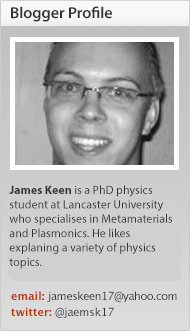« Prev Next »
Physicists in Vienna, Austria, recently sent images encoded in a beam of twisted light two miles across the rooftops of the city.
Their work was reported in the New Journal of Physics.
Whilst the concept, technically referred to as Orbital Angular Momentum (OAM), has been studied for several years previously, this was the first time that such a beam encoded with information had been transmitted outdoors over a significant distance. Work with light of wavelengths in the visible spectrum has proved tricky, with these higher energy photons allowing high data transfer rates but only over short distances, so this was an important demonstration that a significantly larger amount of information can be sent over a significant distance.

The advantage of this twisted light is that, contrary to polarised light waves which are restricted in the directions they can oscillate, the beam twists through space in a corkscrew motion. This corkscrew motion is useful as unlike polarisation, which can be clockwise or anticlockwise, there are potentially an infinite number of twist patterns which could all exist together.
This twisting property allows for very fast communication because instead of a single beam of light of a specific wavelength, light with different amounts of twist, each acting as separate channels of information, can be sent simultaneously just like different colours of light within an optical fibre.
The setup involved a green laser, fixed atop a tower at the Central Institute of Meteorology and Geodynamics, which was shone through a spatial light modulator - a device that puts different twists into the light beam - and this was then transmitted onwards through the air across the city to the detector at the University of Vienna. Sixteen beams, each with a different amount of twist, were used to represent 16 different greyscale shades from white to black. This allowed for images to be encoded, with each pixel in the images associated to the beam representing its colour. The overall laser beam was observed at the detector as a ring of dots on the screen with the number of dots indicating how much the light was twisted and from this the patterns of pixels could be determined.

The OAM characteristic has been previously applied to demonstrate the transmission of 2.5 terabits of data, equivalent to several full movies of information together, through an optical fibre. But the use of optical fibres is not always possible. This process was not the quickest, as the pixels were transmitted individually so it took a while for the images to be redrawn, but importantly did overcome the known problem of transmitting twisted light through the open air, that after only a small distance the OAM modes are messed up due to atmospheric turbulence making it difficult to interpret the encoded information.
This demonstration advances the possibility of developing very fast communication, as different information encoded on numerous beams interwoven together allows the transfer of a significant amount of data, with one potential application of OAM technology being Earth-to-satellite communications.






















